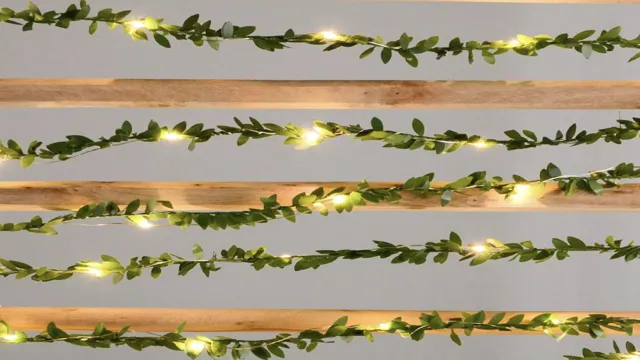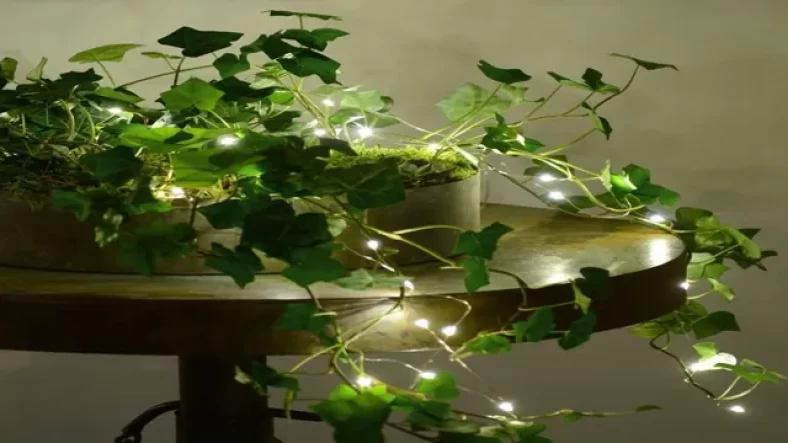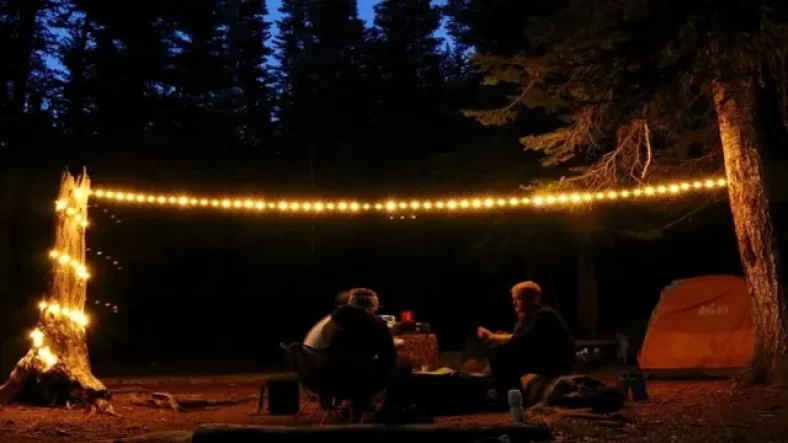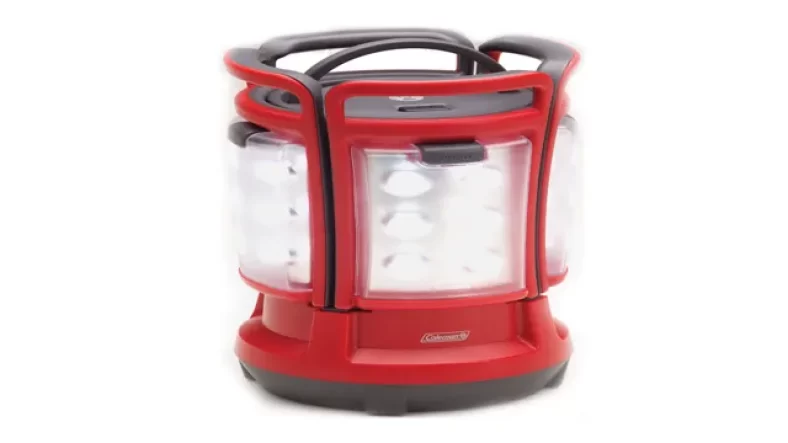Do you miss the greenery of the outdoors during the colder months? Bringing nature indoors through plants can have a calming effect, but adding string lights can create a cozy and enchanting atmosphere. String lights on indoor plants not only add aesthetic value, but they also provide a functional purpose by aiding in photosynthesis. These tiny lights mimic sunlight, allowing plants to thrive during the dark winter months.
Plus, the combination of string lights and plants can turn any room into a magical retreat. Let’s explore how you can achieve this botanical paradise in your own home.
Choosing the Best Plant for String Lights
If you’re thinking of adding string lights to your indoor plants, it’s important to choose the right plant to ensure they thrive under the added lighting. Succulents are an excellent option because they can handle direct light and don’t require too much watering. Aloe vera, snake plants, and cacti are all sturdy choices that can handle the heat and low humidity of indoor spaces.
English ivy is another great choice because it can tolerate low light levels and looks beautiful with string lights woven through its tendrils. Remember, plants need specific care and attention, especially when it comes to lighting requirements, so choose the right plant to ensure your new decor looks great and stays healthy. By following these tips, you’ll be able to create a cozy, warm, and inviting atmosphere in your home with your string-lit indoor plant.
Consider Light Needs and Space
When it comes to choosing the best plant for string lights, it’s essential to consider their light needs and space requirements. Some plants require more sun exposure, while others prefer the shade. Therefore, it’s crucial to identify the best location in your home or garden to hang your string lights and choose plants accordingly.
For instance, succulents are an excellent option for string lights as they don’t need much light and are low maintenance. They come in various colors and shapes, and their unique textures add an interesting edge to your decor. Alternatively, if you’re looking for something more vibrant, you can go for the easy-to-maintain spider plant.
They thrive in low to medium light and don’t require much space, making them perfect for hanging baskets, which you can decorate with your string lights. Remember, before choosing your plants, consider your light sources and available space to ensure maximum visual appeal.

Select Plants with Flexible, Hardy Stems
When it comes to selecting plants for string lights, it’s essential to choose plants with flexible and hardy stems. This will ensure that your light strings are securely held without damaging your plants in the long term. Vegetation with thin and delicate stems can be easily broken under the pressure of the cords, causing the lights to fall.
Similarly, plants with extremely sturdy and rigid stems may not withstand the pull of the strings and could end up snapping under the weight. Hence, it’s vital to choose plants with stems that strike a balance between toughness and pliability. One plant variety that fits the bill is the ivy plant.
Ivy has a tough stem that can withstand the weight of lights while still being flexible enough to accommodate the cords. With ivy, the result is a beautifully lit garden that retains its natural beauty.
How to Style your String Lights on Plants
String lights on an indoor plant can add a touch of magic and cozy atmosphere to any room. To create the perfect look, you need to be mindful of the size and type of plant you are decorating. For instance, smaller plants like succulents or herbs look great with shorter strands of string lights winding around them.
For larger plants like the fiddle-leaf fig or rubber tree, multicolored lights can be draped over the topmost branches and allowed to cascade down to create a dramatic look. Another great way to use string lights is as a backdrop to your plant – position the light strands close to the wall behind the plant and let them create a glowing effect that accentuates the plant’s silhouette. With so many creative ways to use string lights, the possibilities are endless.
So, next time you’re looking to add a little sparkle to your indoor plants, remember to keep these tips in mind for the ultimate style.
Positioning and Wrapping Techniques
One of the most charming and whimsical ways of styling your string lights is by incorporating plants. Not only do the lights bring attention to the natural beauty of the plants, but they also create a warm and inviting atmosphere in your home. The positioning and wrapping techniques for string lights on plants are simple but essential to ensure that they are well-balanced and not overpowering.
For smaller plants, wrap the string lights in a spiral or zigzag pattern, while for larger plants, position them around the outer branches or stems. Make sure to leave enough space between the lights and the plants, as too much touching can damage the foliage. Using these techniques, you can create a captivating display that is sure to impress your guests.
So why not add some warmth and charm to your home decor by styling your string lights on plants today?
Mix and Match String Light Types and Plant Sizes
String lights have the power to transform any space into a cozy and inviting oasis, but have you ever considered pairing them with plants? Mix and match different string light types with plant sizes, and you will be able to create a stunning display that will light up any room. To style your string lights on plants, you can wrap them around the branches of larger plants like ficus or place smaller plants like succulents under a glass cloche with fairy lights. The key is to be creative and experiment with different arrangements until you find the perfect combination of light and greenery.
The pairing of string lights and plants is an ideal way to add a touch of color, texture, and whimsy to your interior design while filling the room with a warm and comforting ambiance. So unleash your inner designer and create a unique and visually appealing display that will make your guests feel right at home.
Create a Cozy Atmosphere with Dimmer Switches
If you’re looking to create a cozy and inviting atmosphere in your home, one easy way is to switch up your lighting with dimmer switches. These handy devices allow you to control the brightness of your lights with ease, making your space more intimate and tailored to your mood. But what about incorporating your string lights into the mix? One fun and trendy way to style your string lights is by hanging them on plants.
Not only does this add a unique touch to your decor, but it also highlights your favorite houseplants by casting a soft glow on their leaves. It’s a simple and affordable way to elevate your space and make it feel more warm and inviting. So why not give it a try and see how string lights and plants can work together to create a cozy ambiance in your home?
Maintenance and Safety Tips for String Lights on Plants
If you have decided to add string lights to your indoor plant, then you may be wondering how to maintain them and keep them safe. Here are some tips to keep in mind. Firstly, make sure that you use lights that are designed for indoor use and have been certified by a recognized safety agency.
Check for damaged wires and replace them immediately if you find any. When placing the lights on your plant, ensure that they are not too close to the leaves to prevent overheating and scorching the plant. It is essential to use a timer to switch the lights on and off at the appropriate time every day.
Doing so will not only save energy but can also help your plant maintain its regular cycle. Finally, if your plant needs watering, unplug the lights or transform the plug into a water-resistant outlet to minimize the risk of electrocution. By following these maintenance and safety tips, you can enjoy your indoor plant’s beauty without any mishaps.
Proper Watering and Light Exposure
Proper watering and light exposure play a vital role in maintaining string lights on plants. It’s essential to remember that plants require adequate amounts of water and light to thrive, and string lights might interfere with their growth and development if not adequately handled. When watering your plants, ensure that the soil is moist and never waterlog.
Overwatering can cause the roots to rot, and the soil might not provide absorb enough nutrients. At the same time, plants need the right amount of light to grow, and string lights might create a shadowy effect, which can stunt growth. Therefore, it’s crucial to strike a balance by ensuring your plants get sufficient hours of sunlight while using string lights to enhance their beauty.
It’s also essential to be vigilant and regularly check the plants to ensure they are not suffering from any adverse effects. Remember, taking care of your plants is paramount to their longevity and health, and with proper maintenance, your plants will thrive with their string light adornments.
Avoid Water Damage to Electrical Circuitry
String lights on plants can add to the beauty of any outdoor space, but it’s important to ensure proper maintenance and safety. Water damage to electrical circuitry is a serious concern, so it’s essential to choose string lights that are designed for outdoor use and have built-in waterproofing or to add waterproofing measures such as plastic or rubber casings. When placing lights on plants, try to avoid placing them too close to leaves or branches and be careful not to twist or bend the wires too much, which can damage the insulation and expose wiring.
Regularly inspect the lights for signs of wear and tear or damage, and never use damaged or frayed wires. By following these maintenance and safety tips, you can enjoy the magical ambiance of string lights on plants while minimizing the risk of water damage and other hazards.
Check Cords and Connections Regularly and Replace as Needed
When it comes to decorating plants with string lights, it’s important to prioritize safety and maintenance. One crucial aspect to keep in mind is checking cords and connections regularly. Over time, cords can wear down or become damaged, increasing the risk of fire or electrocution.
It’s a good idea to inspect the entire length of each cord, looking for any wear and tear or exposed wires. Similarly, check all connections to make sure they’re tight and secure. If you notice any issues, replace the cord or connection immediately.
By staying on top of these maintenance tasks, you can enjoy your string lights without worrying about potential hazards.
Conclusion
In conclusion, adding string lights to an indoor plant is like giving it a little bit of magic. The warm and cozy glow of the lights create a perfect ambiance for any space. It’s like you’re adding a fairytale touch to your home decor.
So go ahead, let your creativity shine, and decorate your plants with string lights to create a mesmerizing indoor oasis. Your plants will thank you, and so will your guests!”
FAQs
How do I hang string lights on an indoor plant without damaging it?
You can use adhesive hooks or clips to attach the lights to the wall behind the plant, or gently wrap the lights around the plant’s branches without applying too much pressure.
Can I use any type of string lights for my indoor plant?
It’s best to use LED string lights since they emit less heat and are safer for plants. Make sure the lights are rated for indoor use and don’t exceed the wattage limit of your electrical outlets.
How long should I keep the string lights on my indoor plant?
It’s best to limit the amount of time the lights are on to 6 to 8 hours per day to prevent overexposure and to mimic the natural light cycle of the plant. Alternatively, you can use a timer to automate the process.
Can I use string lights to promote growth in my indoor plant?
While string lights can provide additional light for your plant, they won’t necessarily promote growth on their own. Make sure your plant is receiving the proper amount of water, nutrients, and sunlight in addition to the string lights.





Leave a Reply